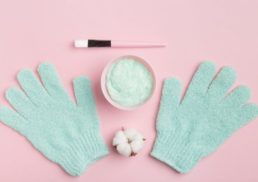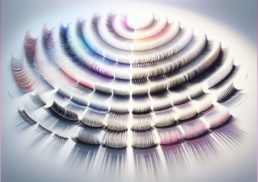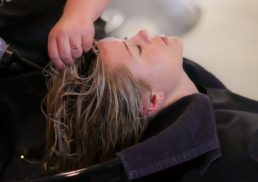Are you tired of dealing with visible sebaceous filaments and want a clearer, smoother complexion? Say goodbye to these pesky pore dwellers and hello to improved skin appearance! This comprehensive guide will teach you everything you need to know about sebaceous filaments, their formation, and how to safely perform sebaceous filament extraction. Plus, discover the differences between blackheads and sebaceous filaments, and learn how to establish a skincare routine to prevent their formation in the first place.
Table of Contents
Key Takeaways
This article explains the formation and extraction of sebaceous filaments, their structural differences from blackheads, safe extraction methods for both professional treatments and at-home tools, a skincare routine to minimize them as well as preventative measures.
Potential risks associated with improper techniques include skin damage, scarring or infection due to over-extraction.
Professional treatment is recommended in order to reduce risk of injury or irritation when extracting sebaceous filaments.
Understanding Sebaceous Filaments and Extraction

Sebaceous filaments are a common concern for those with oily skin. These hair-like structures appear within the pores and can make the skin appear less smooth and clear. While sebaceous filaments aren’t detrimental to the skin, some people may want to get rid of them for cosmetic reasons.
To comprehend the nature of sebaceous filaments and the reasoning behind their extraction, we will delve into their formation process and extraction motives.
Sebaceous Filament Formation
Sebaceous filaments form as a result of the natural production of sebum and skin cells, an oily substance that keeps our skin healthy and moisturized. These filaments play a crucial role in maintaining the skin’s natural moisture balance by facilitating the flow of sebum to the skin’s surface. Filaments are a normal occurrence; however, when there’s an excess of sebum production, sebaceous filaments become more visible, leading to the desire for extraction.
Bear in mind that sebaceous filaments are integral to the skin’s structure, and their existence doesn’t necessarily imply an unhealthy skin condition. When extracted, sebaceous filaments can look like a thin strand of sebum, which might be mistaken for a blackhead or whitehead.
Reasons for Extraction
People may choose to extract sebaceous filaments for aesthetic purposes or to enhance the look of their skin. However, extraction of sebaceous filaments is not effective in improving skin texture, and their presence is actually essential for healthy skin. Instead of extraction, using active ingredients that exfoliate the skin and products such as retinol can be beneficial in improving skin texture around hair follicles and pores.
Attempting to extract sebaceous filaments can lead to skin injury, permanent scarring, and pore damage or stretching. It is advisable to be cautious when attempting to extract them and maintain the skin’s natural moisture balance to reduce their appearance. Extraction can provide a temporary improvement in the appearance of the skin and may reduce the chance of acne formation, especially in individuals with very oily skin.
Distinguishing Between Blackheads and Sebaceous Filaments
To ensure appropriate skin treatment, it is important to distinguish between sebaceous filaments and blackheads, as they may appear similar, especially in individuals with very enlarged pores. While both blackheads and sebaceous filaments contribute to noticeable sebaceous filaments on the skin’s surface, they have unique differences in structure and appearance.
We will examine the structural differences and visual characteristics of blackheads and sebaceous filaments, which will aid in their accurate identification and appropriate treatment.
Structural Differences
Blackheads are blocked pores with an oxidized dark hue, whereas sebaceous filaments are not blocked and have a more subtle hue. When the sebaceous glands secrete an excessive amount of sebum, it can mix with dead skin cells and other impurities, resulting in blocked pores, which can lead to the development of blackheads and sebaceous filaments.
The blackhead appears dark because the plug inside it gets oxidized when exposed to air. Oxidation causes a discoloration, resulting in the characteristic dark color. When blackheads are extracted from the skin, the dark, waxy plug may be expelled from the pore. Keep in mind that blackheads exhibit larger pore sizes in comparison to sebaceous filaments.
Visual Appearance
Looking at visual appearance, blackheads present as raised bumps with dark specks of dirt, while sebaceous filaments appear as dark spots on the skin. Blackheads have a dark hue resulting from oxidation, whereas sebaceous filaments have a lighter shade and are not blocked.
Sebaceous filaments typically present as dark spots on the skin, though they tend to be smaller, flatter, and lighter in color than blackheads. Blackheads, on the other hand, are typically black or very dark brown, whereas sebaceous filaments are usually light-colored, ranging from white to light gray.
Safe Extraction Methods for Sebaceous Filaments
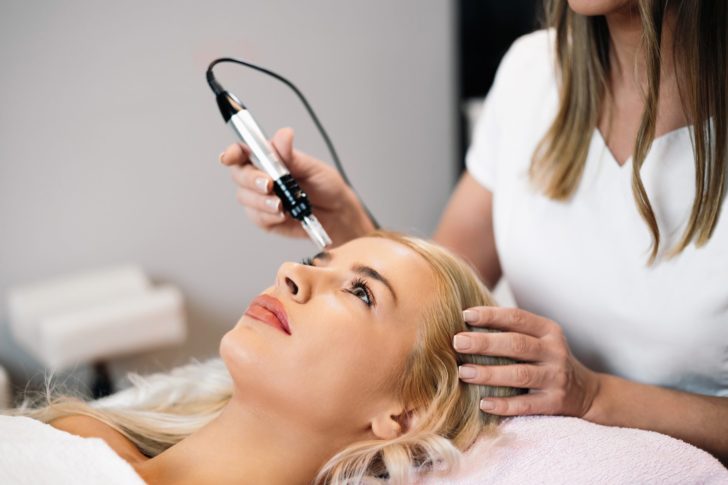
Having clarified the differences between blackheads and sebaceous filaments, we will now investigate safe extraction methods that can help in reducing their visibility. Whether you’re seeking professional treatment or looking for at-home extraction tools, it’s crucial to know the right techniques to avoid potential risks and side effects.
This section covers professional treatments and home extraction tools that can be safely employed for sebaceous filament extraction.
Professional Treatments
Professional treatments for sebaceous filament extraction include:
Extraction facials
Peels
Carbon laser facials
CO2 laser
RF microneedling
Prescription medications to reduce oil production
These treatments, administered by dermatologists or estheticians, aim to reduce the visibility of sebaceous filaments and improve the condition of the skin.
The average cost of professional treatments for sebaceous filament extraction can range from $200 to $350, depending on geographic location and the provider. Remember that sebaceous filaments may reappear even after professional extraction, hence a proper skincare routine is needed to sustain their reduced visibility.
At-Home Extraction Tools
For those who prefer at-home treatments, there are several extraction tools available, such as:
JPNK Blackhead Remover Tool Comedones Extractor Acne Removal Kit
Curved metal extraction tools
Dermaflash Dermapore, a skin spatula
StackedSkincare Ice Roller
Facial roller device
These tools can effectively help you get rid of sebaceous filaments with proper usage.
Ensure safety while using at-home extraction tools by following these steps:
Apply a warm compress to the affected area to soften and open up the pore.
Use an extractor tool or your fingers to gently extract the sebaceous filament.
Wrap your fingers in tissue or cotton to provide a barrier between your skin and the tool.
Apply gentle pressure and pinch the skin around the filament to remove it.
Cleanse the area with a cleansing balm or oil to remove any remaining debris.
Be gentle and cautious during the extraction process to avoid causing any damage to your skin’s surface.
Learn more, visit How to Safely Extract Sebaceous Filaments at Home – Coveteur.
Skincare Routine to Minimize Sebaceous Filaments
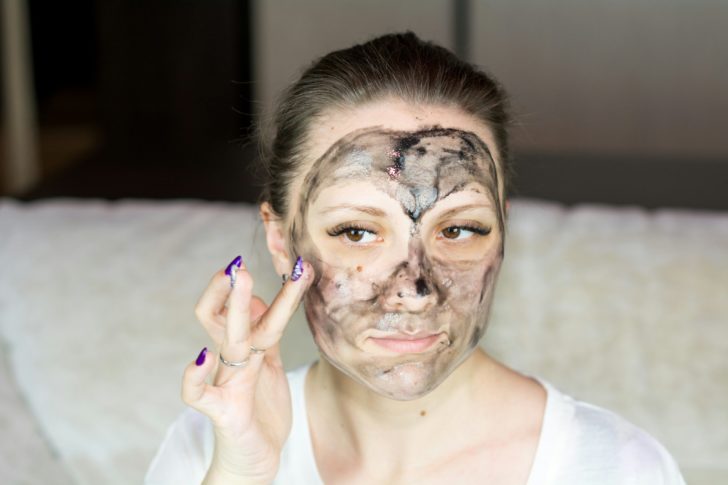
Creating a skin care routine plays a key role in reducing the visibility of sebaceous filaments and promoting healthy skin. By incorporating various skin care products and techniques, you can keep your skin clean, fresh, and less prone to sebaceous filament formation.
This section will delve into:
The significance of cleansing and exfoliation
The function of chemical exfoliants
The role of moisturizing and sun protection in the diminution of sebaceous filaments.
Cleansing and Exfoliation
Cleansing and exfoliation are essential for reducing sebaceous filaments, as they help eliminate surplus oil, dead skin cells, and debris from the pores. Cleansing your skin daily helps to prevent clogged pores and keep them clear. Exfoliation is beneficial in reducing sebaceous filaments by removing dead skin cells and unclogging pores, which can be done through physical exfoliation with facial scrubs or chemical exfoliation with ingredients such as glycolic acid or AHAs.
The key to successful cleansing and exfoliation is finding a balance between removing excess sebum and maintaining the skin’s natural moisture levels. Over-exfoliation can strip the skin of its essential oils and lead to irritation, so be cautious and determine the appropriate frequency and intensity for your skin type.
Chemical Exfoliants
Chemical exfoliants play a significant role in breaking down oil plugs and minimizing sebaceous filaments by eliminating excess oil, dead skin cells, and debris from pores. These exfoliants include alpha hydroxy acids (AHAs), beta hydroxy acids (BHAs), and polyhydroxy acids (PHAs), which can be found in various skincare products.
To use a chemical exfoliant effectively, follow these steps:
Read and follow the product’s instructions.
Start with a lower concentration to minimize potential irritation.
As your skin adjusts, you may increase the concentration or frequency of use.
It is generally recommended to apply chemical exfoliants once or twice a week for optimal results.
Moisturizing and Sun Protection
Proper moisturizing and sun protection are crucial in maintaining skin health and preventing pore enlargement. Keeping the skin hydrated can help regulate sebum production and inhibit the formation of sebaceous filaments. Opt for hydrating and non-comedogenic moisturizers with ingredients such as hyaluronic acid, glycerin, and ceramides to provide hydration without blocking the pores and supporting the skin’s natural moisture.
Sun protection is also essential in preventing sebaceous filament formation. Prolonged sun exposure can cause pores to become enlarged, resulting in more visible filaments. Applying sunscreen with SPF can limit the penetration of UV rays into the skin, thereby helping to maintain the size of pores and reduce visible signs of aging.
Preventative Measures for Sebaceous Filament Formation
In addition to establishing a skincare routine, adopting certain lifestyle habits can help prevent sebaceous filament formation. Factors such as diet, exercise, and stress management play a vital role in maintaining healthy skin and minimizing the appearance of sebaceous filaments.
We will investigate how diet and lifestyle choices affect sebaceous filament formation and discuss oil-regulating products that can manage their visibility.
Diet and Lifestyle
Diet and lifestyle choices can significantly influence sebaceous filament formation. For instance, smoking can trigger the production of androgen, which signals the production of sebum, leading to increased sebaceous filament formation. Alcohol consumption can also aggravate sebaceous filament formation and contribute to the production of excess sebum, potentially resulting in clogged pores and the appearance of sebaceous filaments.
Staying hydrated, consuming a balanced diet, and engaging in regular exercise can also help reduce the visibility of sebaceous filaments by keeping the skin hydrated and promoting healthy blood circulation. Managing stress levels can further contribute to healthier skin by reducing sebum production and inflammation.
Oil-Regulating Products
To control the visibility of sebaceous filaments, consider incorporating the following oil-regulating products into your skincare routine:
Products containing retinol or retinoids
Cleansing balms or oils for double-cleansing
Salicylic acid treatments or serums
Clay masks
These products can help regulate oil production and minimize sebaceous filament formation.
Natural oil-regulating products, such as retinol, oil-based cleansers, and niacinamide, can also be beneficial for sebaceous filament control. By incorporating these products into your daily skincare routine, you can maintain a healthy complexion and prevent the formation of sebaceous filaments.
Potential Risks and Side Effects of Sebaceous Filament Extraction
Despite extraction offering temporary relief from sebaceous filaments, awareness of potential risks and side effects is vital. Improper extraction techniques can lead to skin damage, scarring, and even infection.
This section will cover the hazards of over-extraction and the risks of infection and irritation stemming from incorrect extraction techniques.
Over-Extraction
Over-extraction refers to the excessive and/or aggressive extraction of sebaceous filaments, which can cause skin damage. Observable indications of over-extraction include redness, irritation, inflammation, and potential scarring of the skin. It is possible for over-extraction to result in permanent skin damage, including redness, inflammation, hyperpigmentation, scarring, and stretching of the pores, making them appear larger.
To avoid over-extraction and potential skin damage, it is recommended to perform sebaceous filament extraction every 6-8 weeks. If you’re unsure about the proper extraction techniques, it’s best to consult a dermatologist or esthetician for guidance.
Infection and Irritation
Improper extraction techniques can lead to infection and irritation. Attempting to pick or squeeze sebaceous filaments can cause:
Scarring
Irritation
Inflammation
Blocked pores
The spread of bacteria
To avoid injury and scarring, it is recommended to have extractions performed by a dermatologist or aesthetician.
In case of infection or irritation resulting from improper sebaceous filament extraction, you can take the following steps:
Utilize gentle cleansing products
Abstain from excessive exfoliation
Regulate oil flow with retinol or retinoid products
Seek medical assistance if necessary
Summary
In conclusion, sebaceous filaments are a normal part of the skin’s structure, but their appearance can be minimized through proper skincare routines, professional treatments, and at-home extraction tools. By incorporating effective cleansing, exfoliation, moisturizing, sun protection, and oil-regulating products into your daily routine, you can maintain a healthy complexion and prevent the formation of sebaceous filaments. Remember to consult a dermatologist or esthetician for guidance on safe extraction techniques and always practice caution to avoid potential risks and side effects.
Frequently Asked Questions
Is it OK to extract sebaceous filaments?
It is not recommended to extract sebaceous filaments, as they are naturally occurring and serve an important purpose in maintaining healthy skin. If you attempt to squeeze them out, you risk damaging your skin and causing permanent scarring. Additionally, if you do manage to successfully express the contents, it will fill up again within a month.
How do you extract sebaceous filaments at home?
The best way to extract sebaceous filaments at home is to start by cleansing and toning the skin daily, exfoliating weekly, and using a pore strip if blackheads appear. Additionally, using a retinol serum or cream one or two nights a week, followed by a BHA exfoliant or clay face mask will help reduce oiliness in pores. Lastly, extracting sebaceous filaments requires angling your hands and squeezing from the sides and bottom of the pore.
Can you pull out sebaceous filaments with tweezers?
Yes, it is possible to pull out sebaceous filaments with tweezers, as demonstrated by Dr. Lee in the clip. She uses surgical tweezers to pluck them from the patient’s pores, pushing down slightly if the filaments are embedded.
Can a dermatologist remove sebaceous filaments?
Although it is not possible to completely remove sebaceous filaments, you can minimize their appearance by following a skin care routine that includes exfoliation with facial scrubs to scratch away dead cells. Any active ingredients that work to exfoliate the skin will also help improve the look of sebaceous filaments.
How often should I extract sebaceous filaments?
It is best to perform sebaceous filament extraction every 6-8 weeks in order to maintain healthy skin.

